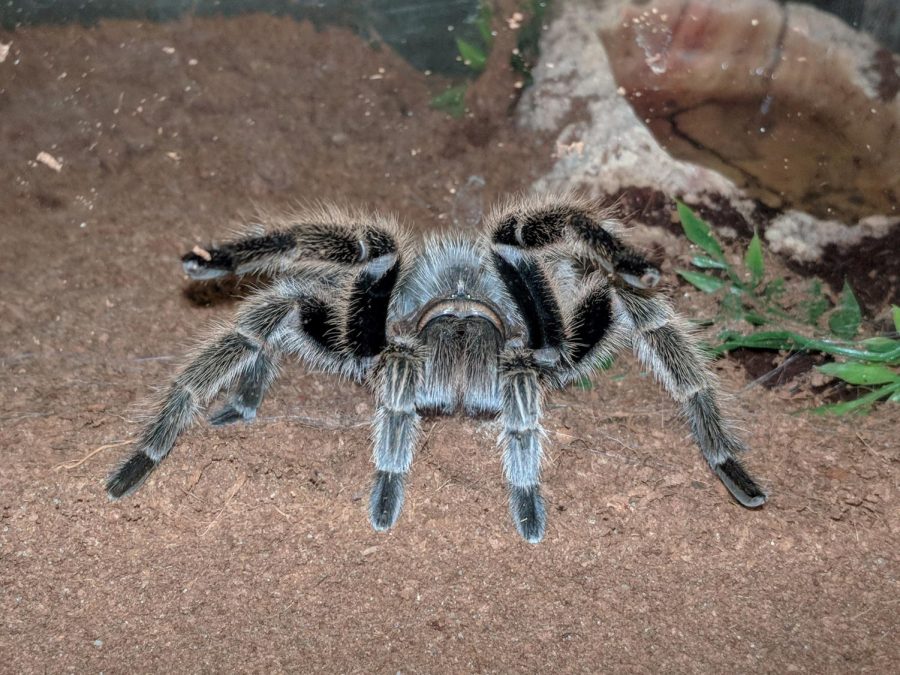Spidey sense: When eight-legged friends pay a visit
Most spiders just want to warm up, will rarely cause harm, expert says
At the end of fall, most spiders come into houses to find warm shelter and search for a mate.
November 15, 2018
As people begin to rummage through their storage for Christmas decorations, one graduate student suggests to be aware of a harmless eight-legged arthropod that may just be trying to find a safe place to stay as winter approaches.
Abigail Hayes, a graduate student in the department of entomology, said one of the reasons most spiders make an appearance during this time of the year is because, much like humans, they do not want to freeze to death.
Hayes said another reason is for reproduction, when a male spider searches for a female spider. Female spiders live longer than males and because males have a limited time to live they have the urge to pass on their genes.
“They’re out looking for the females before they expire because they kind of have a set expiration date that’s coming up,” Hayes said. “That’s why they’re out looking for love, so to speak.”
Female spiders will eat anything smaller than them, so male spiders have to prove their intent to mate by tapping a certain pattern on the ground with their legs, she said. Some might even bring food as a gift.
“They’ll kind of gauge like, ‘OK are you responsive? Are you pissed off? Do I need to run away?’ ” Hayes said.
Other male arthropods like crickets and cicadas court the opposite sex the same way, Hayes said. Male crickets chirp for female crickets, and cicadas emit loud noises and sing for the female cicadas.
She said a majority of spiders aren’t venomous enough to require medical attention. One of the most common types of spiders people ask about are trapdoor spiders. The black widow, on the other hand, is the most infamous type in the Pacific Northwest and is usually distinguishable.
“They got the big black butt and the red hourglass on the underside,” Hayes said. “Those are really the only dangerous ones in the area.”
When people ask her how to deal with spiders, Hayes advises them to put the spider outside by placing a cup over it and sliding a piece of paper underneath. She said people perceive most spiders as “scary-looking” and tend to squish them instead.
“It’s more scared of you than you are of it,” Hayes said. “You’re a giant predator to them — they don’t want to mess with you.”
She said people’s fear of spiders stemmed from what they learned and are conditioned to be afraid of. She mentioned her mom’s fear of certain types of arthropods like hairless caterpillars and tomato hornworms.
“I was afraid of those as a kid,” Hayes said. “I realized how illogical that was when I was in college.”
In addition to being a graduate student, Hayes also teaches Entomology 103, which is an introductory entomology course for non-science majors, she said. She was into entomology ever since she was a kid, but was discouraged at one point because her teachers were concerned when she did not play make-believe or dress-up games with other girls.
“I was that weird kid that would go outside and catch bugs at recess and keep them in my pencil box,” Hayes said. “I’ve never been into that [other] kind of stuff.”
















